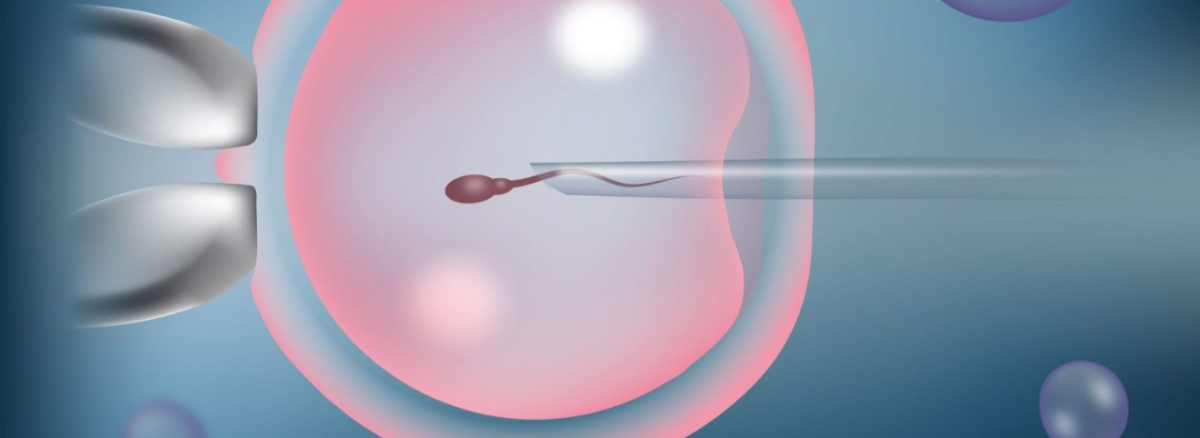About 40% of cases of infertility are caused by the man.
For a man to impregnate a woman, his sperm count needs to be over 15
million/ml in a single ejaculation. Men with sperm count less than 15
million/ml will have challenges with natural conception. With counts below 5
million/ml, even IVF may not assist couples in achieving a pregnancy.
ICSI is a revolutionary treatment for treating male infertility. In the normal
IVF, over 50,000 motile sperm cells are placed by the egg in a dish and
one of the sperm cells will penetrate the egg and fertilize it.
The ICSI procedure utilizes a microscope fitted with a micromanipulator to
inject a single sperm into a matured egg to help achieve fertilization, unlike
IVF which requires millions of sperm cells. It carries a higher fertilization
rate and birth rate than traditional IVF. Hence, it improves the success rates of
IVF in men with male factor infertility.
This procedure has brought hope to men who would not have been able to
have children despite using the IVF procedure. ICSI programs ensure
couples with low sperm count have the best chances of achieving a
pregnancy with the male partner’s sperm.
BENEFICIARIES OF ICSI
ICSI is a treatment for male infertility and may be offered when:
The sperm count is too low
The sperm cells cannot swim properly
After a previously failed IVF where there was no fertilization
Where the sperm cells had to be removed from the testicle using a
surgical procedure in men who cannot ejaculate
Retrograde ejaculation (semen flows backward into the bladder).
Where traditional IVF has failed
The ICSI procedure involves the following steps:
1. Ovulation induction
The woman is given daily injections called gonadotropins to stimulate the
growth of multiple eggs. Normally, every woman produces one egg at the
time of ovulation; however, the drug aims to help produce many eggs to
increase the chances of a pregnancy.
The injections are administered for about 9 to 12 days. While taking the
injections, several times Ultrasound scans are carried out to monitor the
growth of the ovaries and response to the treatment.
When the doctor decides that your eggs are large enough, Human
Chorionic Gonadotropin [HCG] will be administered to cause the final
maturation of the follicles.
2. Retrieval of the eggs
The eggs will be expected to mature 36 hours after the HCG injection and
be ready for retrieval from the ovaries. Egg retrieval involves the removal of
the eggs from the ovaries using a long ovum pick-up needle attached to a
transvaginal ultrasound probe. The procedure is carried out under some
anesthesia to ensure you do not feel the pain of the needle prick. A few
hours after the procedure you should be able to go home.
The client is given a progesterone suppository to insert into her vagina after
the procedure. Progesterone helps prepare the lining of the uterus for the
implantation of the embryo.
3. ICSI
On the day of your egg retrieval, the male partner is expected to provide a
fresh semen sample to the laboratory. He could produce the sample at
home or in the hospital. Fertilization occurs by injecting a single sperm into
the egg using a special microscope called a micromanipulator.
Following the injection, they will be placed in an incubator to enable
development.
For the next 3 – 5 days, the embryologist will monitor the growth of the
embryo, assessing their growth and quality, and deciding which ones are
best for transfer.
The client will be updated on the progress of the embryo during this period.
Clients do not need to present to the hospital; however, the woman is
counseled to continue her progesterone insertion as recommended.
4. Embryo transfer
Embryo transfer is usually done on day 3 or 5 days after the retrieval of the
eggs depending on the clinic protocol. Day 5 transfer is more popular.
For the transfer, the best-quality embryos are used. Your doctor will
discuss with you the number of viable embryos to transfer into the womb. In
most cases, 2 – 3 embryos are transferred back into the uterus. In
countries like the UK, single embryo transfer is done to reduce the
risk of multiple pregnancies.
The transfer which is a painless procedure involves loading the embryo into
a special catheter and under ultrasound guidance depositing it gently into
the uterus.
You will be advised to remain in bed for about an hour after the procedure
and then you can go home and resume normal activities.
5. Embryo freezing
After the transfer of the best-looking embryos, there may still be some
excess embryos remaining. Any unused high-quality embryos may be frozen
to allow the option of future implantation. Your doctor will need your
consent to freeze these embryos and the terms of freezing would have
been discussed with you during your initial consultation.
6. Follow up
After embryo transfer, you will continue your progesterone insertions at
home. You will be advised not to engage in any strenuous activities outside
your routine.
Two weeks after the procedure, you will receive a call to present at the
clinic for a blood pregnancy test.
If the pregnancy test is positive, you will continue the progesterone until
you are about 11 weeks when your placenta begins to produce enough of
the hormone to support the pregnancy.
An ultrasound scan will be done in the 6 th week to check for fetal heart
activity.
If the pregnancy test is negative, your health team will discuss with you the
possible reasons why this occurred and you may choose to have another
IVF cycle.

